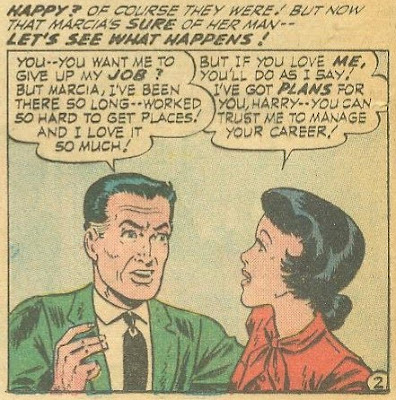What do they have in common?
1. Stone Boy, the Blob and Metamorpho?
All turned down the opportunity to join one of the superhero teams. Respectively, they passed on the Legion, the X-Men and the Justice League.
2. Batman, Aquaman and Green Arrow?
As usual, my readers came up with one that I hadn't thought of: All were backup features in World's Finest at one point. The intended answer was that all three had caves that they used as their headquarters.
3. Tommy Tomorrow, Congo Bill and the Legion of Super-Heroes?
Ditto with this one. Yes, they were all backups in Action Comics. But they were also bumped to make room for Supergirl. Tommy Tomorrow was bumped with Action #252's introduction of the Lass of Steel, while Congo Bill got the heave-ho in order to expand her feature effective with Action #262. The Legion left Adventure Comics to the Maid of Might in #381.
4. Jimmy Olsen, Robin and Alfred?
They all knew Batman was actually Bruce Wayne. I talked about the big reveal to Jimmy Olsen here.
5. The Joker, the Blue Bowman and the Clock?
All of them had fought Batman originally in different identities. The Joker was the Man in the Red Mask, the Blue Bowman was the Signalman, and the Clock was an ordinary criminal named Kyle.
Jim came, he saw and he conquered all five questions. Michael Rebain got the first four right. Ed got #2 and #3 correct.
More about →
1. Stone Boy, the Blob and Metamorpho?
All turned down the opportunity to join one of the superhero teams. Respectively, they passed on the Legion, the X-Men and the Justice League.
2. Batman, Aquaman and Green Arrow?
As usual, my readers came up with one that I hadn't thought of: All were backup features in World's Finest at one point. The intended answer was that all three had caves that they used as their headquarters.
3. Tommy Tomorrow, Congo Bill and the Legion of Super-Heroes?
Ditto with this one. Yes, they were all backups in Action Comics. But they were also bumped to make room for Supergirl. Tommy Tomorrow was bumped with Action #252's introduction of the Lass of Steel, while Congo Bill got the heave-ho in order to expand her feature effective with Action #262. The Legion left Adventure Comics to the Maid of Might in #381.
4. Jimmy Olsen, Robin and Alfred?
They all knew Batman was actually Bruce Wayne. I talked about the big reveal to Jimmy Olsen here.
5. The Joker, the Blue Bowman and the Clock?
All of them had fought Batman originally in different identities. The Joker was the Man in the Red Mask, the Blue Bowman was the Signalman, and the Clock was an ordinary criminal named Kyle.
Jim came, he saw and he conquered all five questions. Michael Rebain got the first four right. Ed got #2 and #3 correct.


















































